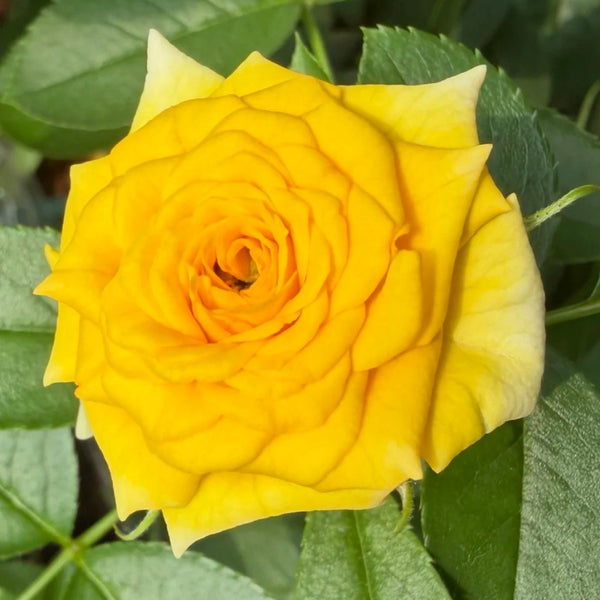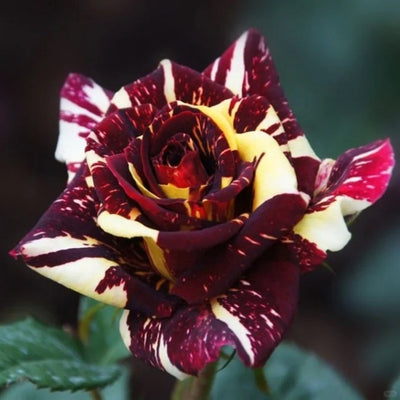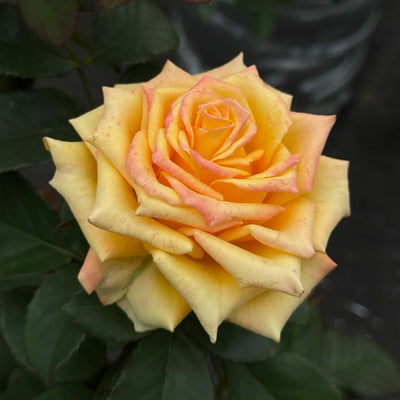🔥 Recommended Product
Comprehensive Guide to Rose Cultivation Techniques
Roses, often referred to as the "Queen of Flowers," are admired worldwide for their beauty, variety, and symbolism. Successful rose cultivation, however, requires a deep understanding of their types, ecological characteristics, propagation methods, and management practices. This guide provides detailed insights into rose cultivation, focusing on technical and practical aspects to ensure thriving blooms in any setting.

1. Classification of Roses
Rose classification can be complex, as experts have debated it for years. Broadly, roses are categorized into several main types, each with unique characteristics:
1.1 Hybrid Tea Roses
Hybrid tea roses are among the most popular and visually stunning rose types, recognized for their:
Rich green foliage: Often glossy.
Large, well-formed blooms: Known for their elegance and fragrance.
These roses are ideal for both landscaping and cut flower arrangements.
1.2 Floribunda Roses
Floribunda roses are celebrated for their:
Vivid color range: They come in an array of hues.
Clustered blooms: Smaller in size but bloom profusely in groups, creating a spectacular visual display.
1.3 Other Varieties
Other notable types include:
Grandiflora Roses: A blend of hybrid tea and floribunda qualities.
Miniature Roses: Perfect for small spaces or container gardening.
Climbing Roses: Ideal for vertical gardens, trellises, and arches.
2. Ecological Characteristics of Roses
Understanding the natural habits and preferences of roses is crucial for their successful cultivation:
2.1 Temperature and Hardiness
Roses are temperate deciduous plants with some tolerance for cold weather. In regions with harsh winters, roses may require soil cover or other protective measures to overwinter safely.
2.2 Light Requirements
Roses thrive in **sunny conditions**, requiring at least **six hours of sunlight daily.
While tolerant of long daylight hours, intense summer heat can slow growth and reduce bloom quality.
2.3 Soil Preferences
Roses prefer:
Neutral to slightly alkaline soil**: pH levels between 6.0–7.5.
Well-drained loamy soil**: Rich in organic matter for optimal growth.
They do not perform well in sandy or highly acidic soils.
3. Methods of Rose Propagation
Roses are primarily propagated through vegetative methods, which include cuttings, grafting, division, and layering. Among these, cuttings and grafting are the most widely used techniques.
3.1 Propagation by Cuttings
Steps to Successful Cutting Propagation:
1. Preparation of Cuttings:
Select semi-hardwood branches, typically about **10 cm long** with three buds.
Remove the lower leaves to minimize moisture loss.
2. Preparation of the Growing Medium**:
Use a nutrient-rich, well-drained mix.
Maintain soil moisture without waterlogging.
3. Planting Cuttings**:
Dip the base of the cutting in a rooting hormone.
Insert it into the soil at a depth of one-third of its length.
4. Care During Rooting**:
Keep the medium moist and cover the cuttings with a transparent plastic sheet to retain humidity.
Ensure the rooting temperature is between **20–25°C**.
After about a month, rooted cuttings can be transplanted into pots or garden beds.
3.2 Propagation by Grafting
Key Points:
Grafting Method: Commonly done using bud or whip grafting techniques.
Choice of Rootstock: The rootstock should be vigorous, disease-resistant, and well-adapted to local conditions.
Grafted roses typically develop faster and are more robust compared to those propagated by cuttings.
4. Rose Cultivation Management
Cultivating roses requires meticulous attention to planting techniques and ongoing care.
4.1 Indoor Cultivation (Potted Roses)
Potted roses are ideal for limited spaces.
Lighting: Ensure the plants receive plenty of indirect sunlight.
Watering: Follow a "deep soak" routine, ensuring the soil remains moist but not waterlogged.
Pruning: Regularly prune for shape, air circulation, and to encourage new growth.
Repotting: Every 1–2 years, repot roses to refresh the soil and provide room for root growth.
4.2 Outdoor Cultivation (Field Roses)
Roses cultivated in the field have robust growth and large flowers.
Key Practices:
Site Selection: Choose a location with good drainage, adequate sunlight, and proper air circulation.
Soil Preparation: Incorporate organic matter like compost to improve fertility and structure.
Plant Spacing**: Adjust spacing according to rose type (e.g., 75 cm x 75 cm for upright varieties).
5. Pest and Disease Management
Roses are susceptible to various pests and diseases. A proactive approach to their prevention and management is crucial.
5.1 Common Diseases
Powdery Mildew: A fungal disease that appears as white powdery patches on leaves. Use a fungicide like **sulfur-based sprays for control.
Black Spot Disease: Characterized by dark spots on leaves, leading to premature defoliation. Prevent with chlorothalonil-based fungicides**.
5.2 Pest Control
Aphids: Small green or black insects that suck plant sap. Treat with insecticidal soaps or neem oil.
Spider Mites: Tiny pests that cause stippling and webbing. Control using miticides.
6. Seasonal Care for Roses
Each season demands specific care practices to keep roses healthy and productive:
Spring: Fertilize as buds break dormancy and prune to shape.
Summer: Maintain consistent watering and mulch to conserve soil moisture.
Fall: Deadhead spent flowers to encourage continued blooming.
Winter: In colder climates, protect plants with mulch or burlap wraps.
7. Special Tips for Optimal Blooming
Regularly remove spent flowers to direct energy toward new growth.
Apply balanced fertilizers high in phosphorus to enhance flowering.
Ensure proper air circulation around plants to reduce disease risks.
By understanding and implementing these comprehensive techniques, gardeners can achieve stunning results with their rose plants, whether they are cultivating them in pots, gardens, or expansive landscapes. Roses reward careful attention with beauty and fragrance that elevate any space they inhabit.

















































